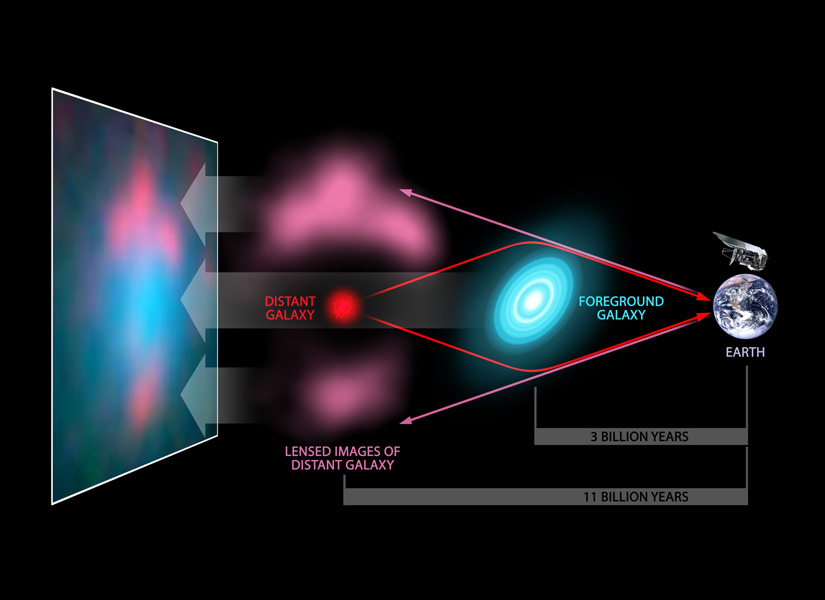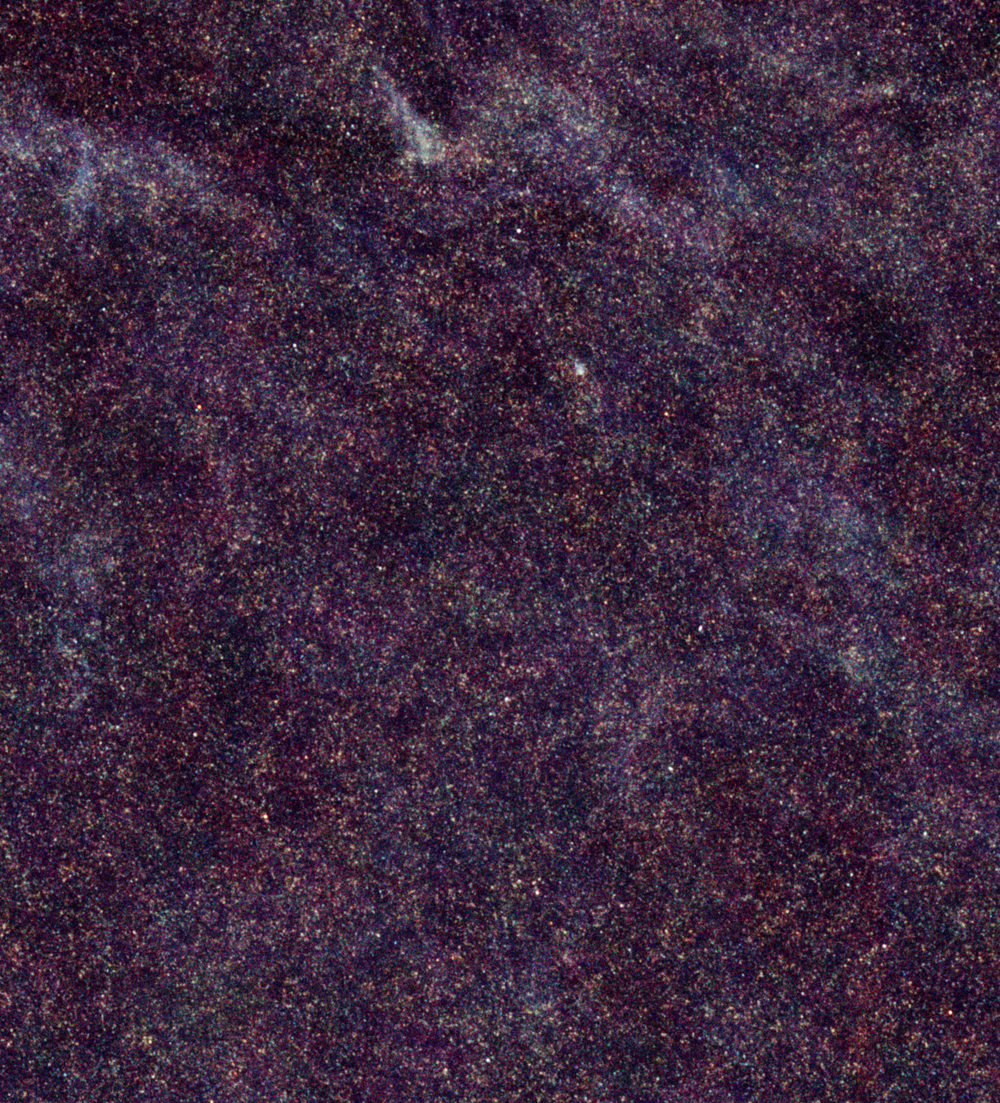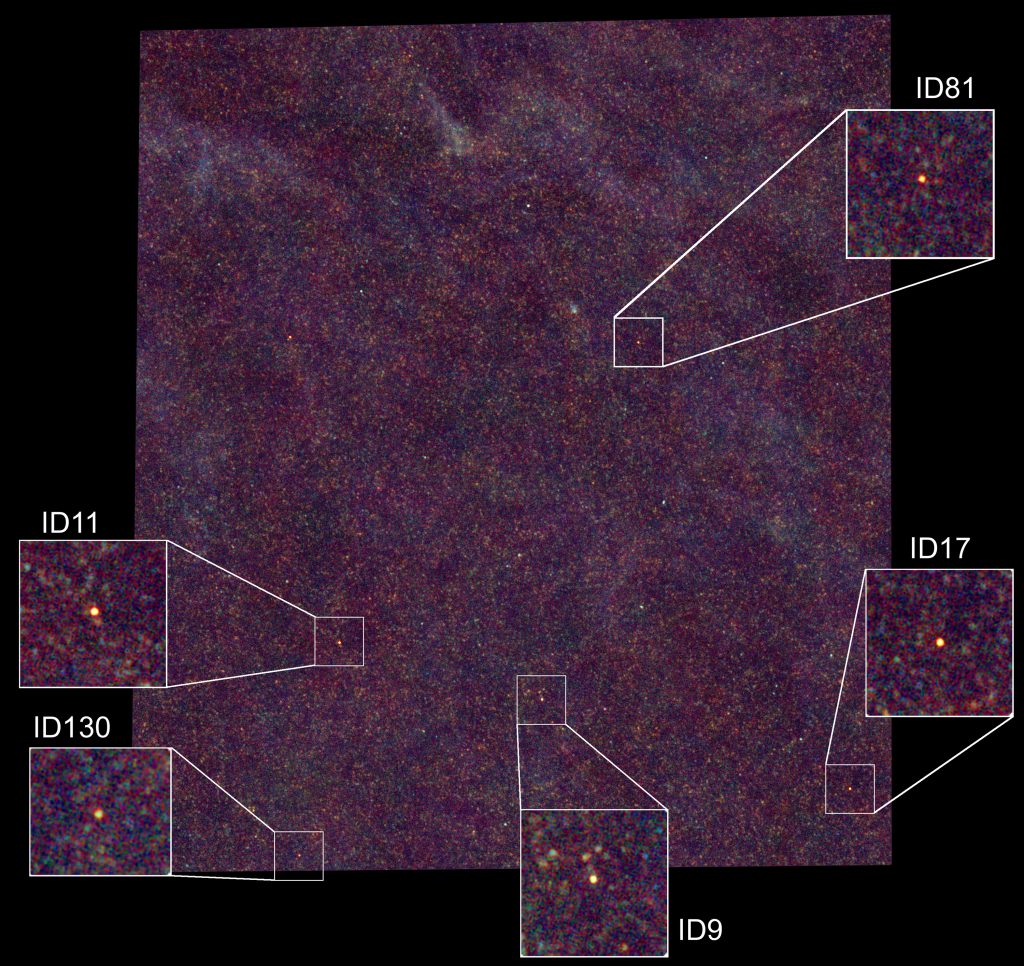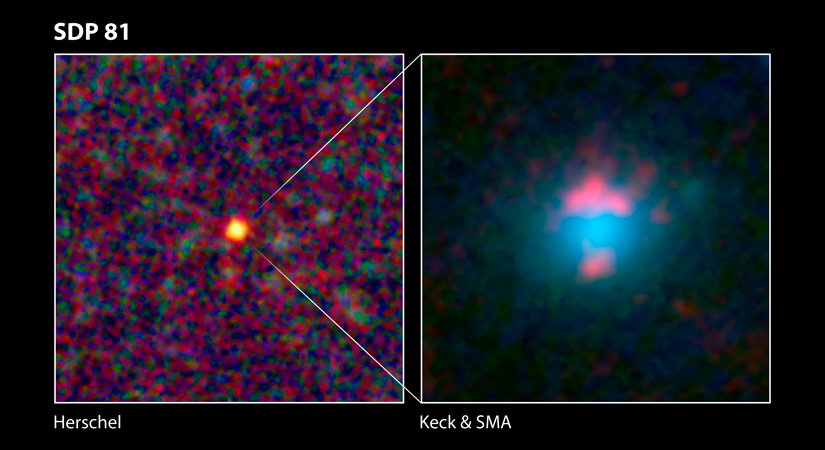| Basic Information | |
| What is this? | Thousands of distant galaxies, including some which have been gravitationally lensed |
| Where is it in the sky? | In the constellation of Hydra the Water Snake |
| How big is it? | The image is around 4 degrees across |
| How far away is it? | Some of the galaxies are seen when the Universe was just 2-4 billion years old |
| What do the colours represent? | Redder galaxies are either cooler or more distant, while bluer ones are warmer or closer. The wispy material is dust in our own Galaxy |
Downloads
See this object in:
A team using Herschel have discovered a new way of locating a natural phenomenon that acts like a zoom lens, allowing astronomers to peer at galaxies in the distant and early Universe. The magnification created by this phenomenon allows astronomers to see galaxies otherwise hidden from us, providing key insights into how galaxies have changed over the history of the cosmos.

Every schoolchild is taught that light travels in straight lines – but a century ago Albert Einstein showed that gravity can cause light to bend. The effect is normally extremely small, and it is only when light passes close to a very massive object such as a galaxy containing hundreds of billions of stars that the results become easily noticeable. When light from a very distant object passes a galaxy much closer to us, its path can be bent in such a way that the image of the distant galaxy is magnified and distorted. These alignment events are called “gravitational lenses” and many have been discovered over recent decades, mainly at visible and radio wavelengths.
As with a normal glass lens the alignment is crucial, requiring the position of the lens – in this case a galaxy – to be just right. This is very rare and astronomers have to rely on chance alignments, often involving sifting through large amounts of data from telescopes. Most methods of searching for gravitational lenses have a very poor success rate with fewer than one in ten candidates typically being found to be real. Herschel’s panoramic imaging cameras have allowed astronomers to find examples of these lenses by scanning large areas of the sky in far-infrared and sub-millimetre light. These results are from the very first data taken as part of the “Herschel-ATLAS” project, the largest imaging survey conducted so far with Herschel, and are published in the prestigious scientific journal Science.
Dr Mattia Negrello, of the Open University and lead researcher of the study, explained, “Our survey of the sky looks for sources of sub-millimetre light. The big breakthrough is that we have discovered that many of the brightest sources are being magnified by lenses, which means that we no longer have to rely on the rather inefficient methods of finding lenses which are used at visible and radio wavelengths.”
The Herschel-ATLAS images contain thousands of galaxies, most so far away that the light has taken billions of years to reach us. Dr Negrello and his team investigated five surprisingly bright objects in this small patch of sky. Looking at the positions of these bright objects with optical telescopes on the Earth, they found galaxies that would not normally be bright at the far-infrared wavelengths observed by Herschel. This led them to suspect that the galaxies seen in visible light might be gravitational lenses magnifying much more distant galaxies seen by Herschel.
To find the true distances to the Herschel sources, Negrello and his team looked for a tell-tale signature of molecular gas. Using radio and sub-millimetre telescopes on the ground, they showed that this signature implies the galaxies are being seen as they were when the Universe was just 2–4 billion years old – less than a third of its current age. The galaxies seen by the optical telescopes are much closer, each ideally positioned to create a gravitational lens. Dr Negrello commented that “previous searches for magnified galaxies have targeted clusters of galaxies where the huge mass of the cluster makes the gravitational lensing effect unavoidable. Our results show that gravitational lensing is at work in not just a few, but in all of the distant and bright galaxies seen by Herschel.”
The magnification provided by these cosmic zoom lenses allows astronomers to study much fainter galaxies, and in more detail than would otherwise be possible. They are the key to understanding how the building blocks of the Universe have changed since they were in their infancy. Professor Rob Ivison of the Royal Observatory, Edinburgh, part of the team that created the images, said “This relatively simple technique promises to unlock the secrets of how galaxies like our Milky Way formed and evolved. Not only does the lensing allow us to find them very efficiently, but it helps us peer within them to figure out how the individual pieces of the jigsaw came together, back in the mists of time”.
Dr Loretta Dunne of Nottingham University and joint-leader of the Herschel-ATLAS survey said, “What we’ve seen so far is just the tip of the iceberg. Wide area surveys are essential for finding these rare events and since Herschel has only covered one thirtieth of the entire Herschel-ATLAS area so far, we expect to discover hundreds of lenses once we have all the data. Once found, we can probe the early Universe on the same physical scales as we can in galaxies next door.”
Professor Steve Eales from Cardiff University and the other leader of the survey added: “We can also use this technique to study the lenses themselves. This is exciting because 80% of the matter in the Universe is thought to be dark matter, which does not absorb, reflect or emit light and so can’t be seen directly with our telescopes. With the large number of gravitational lenses that we’ll get from our full survey, we’ll really be able to get to grips with this hidden Universe.”
The data from the area of sky used for this work has now been released to the astronomical community. Loretta Dunne said ”We hope that now astronomers not directly involved in H-ATLAS will dive into this data set and exploit the wealth of science which is bursting to be done with it.”



